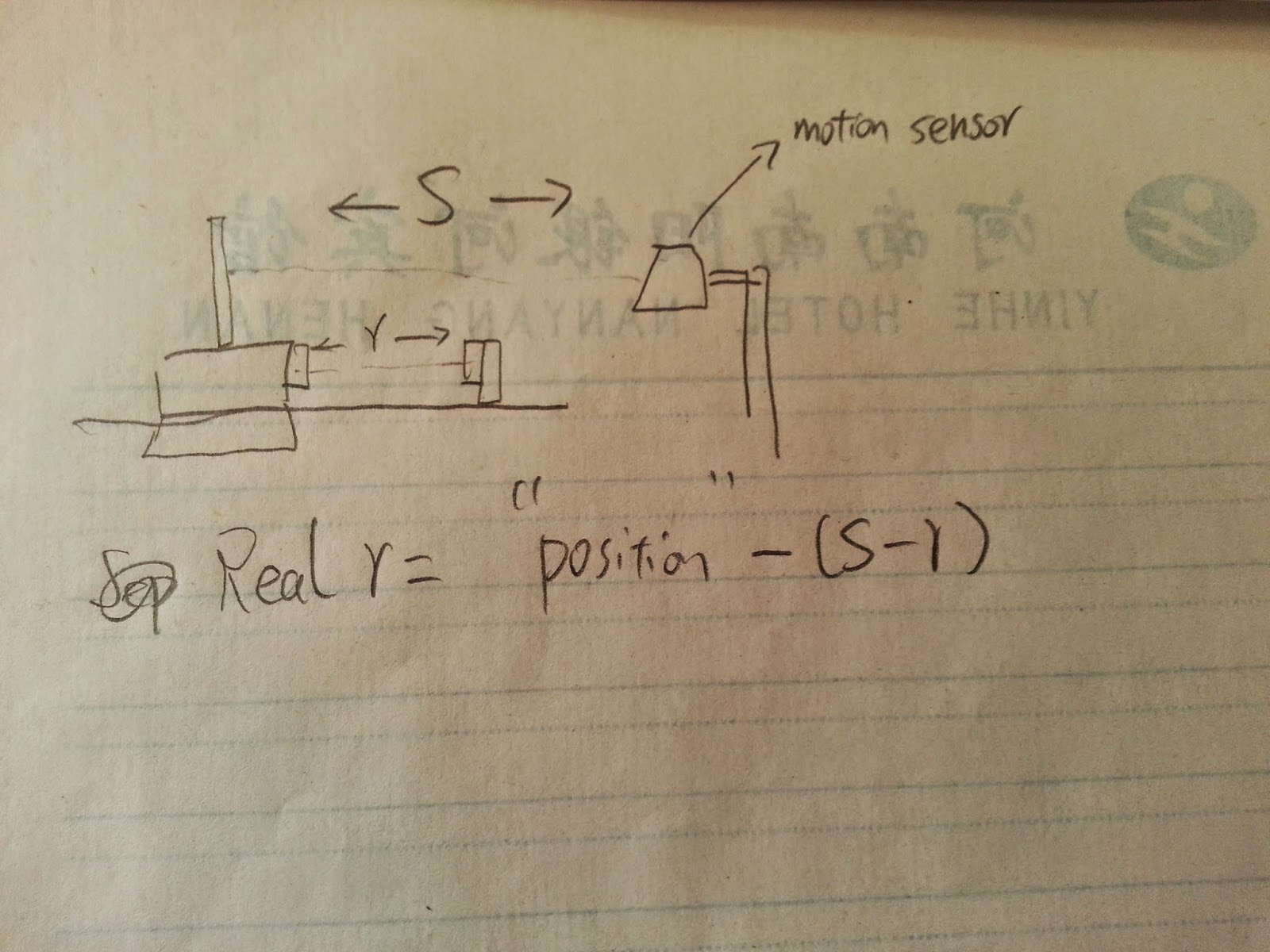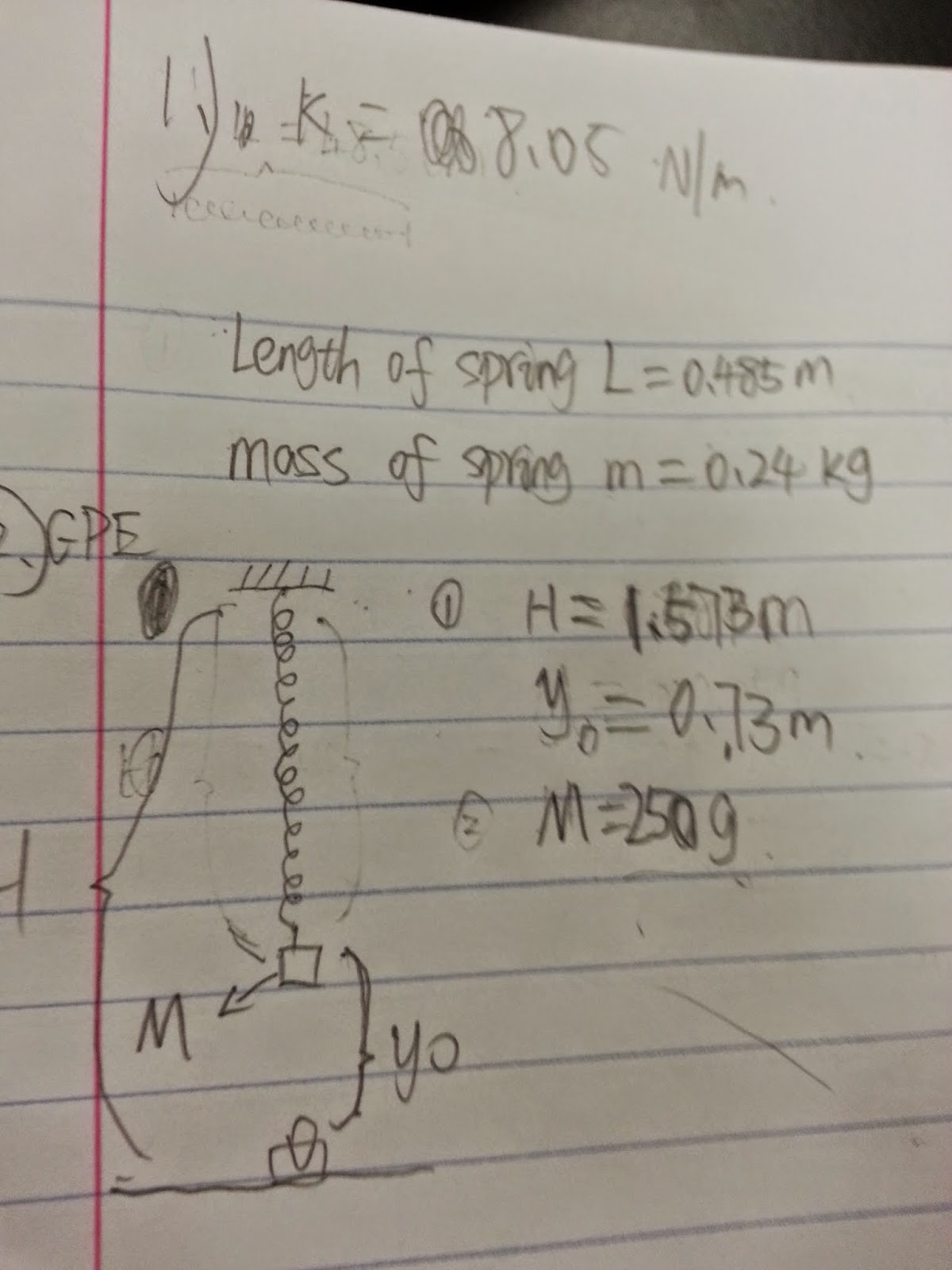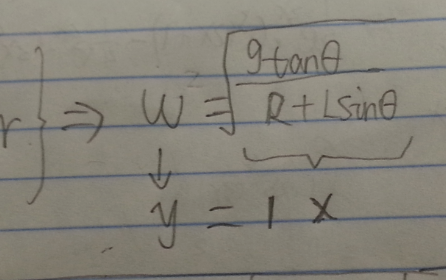Lab 13
Purpose
Test impulse and momentum by using different experiments in elastic.
Introduction
1. Impulse
For a constant force-F, the impulse is J = F*t (average).
If F is not constant, then use the integral method to find out the J
2. Momentum
According the book, mv(final)- mv(initial).
During the collision the force is not constant. The impulse-momentum theorem states that the amount of momentum changesfor the moving cart is equal to the amount of the net impulse acting on the cart: that is J = p (change).
Experiment
This experiment is to test the idea: J = p (change) by using three different experiments.
#1: Observing Collision Forces That Change by Time.
Set up:
1. Use logPro to get the graph
2. Set up graph.
Get the impulse acting on the cart by taking the area under force vs time graph for the collision. Measure the change in momentum of the cart by knowing its mass and measuring its speed before and after the collision using the motion detector.
3. Graph collection
Set up all the equipment with motion detector as shown in the step 2.When everything is ready. Zero the force and begin computer graphing. Push the cart and let it collide. Repeat graphing until getting a desired graph.
4. Data analysis
Graph result of the experiment is shown above, andit's force vs time, position vs time, and velocity vs time graphs.
Integral the area of force vs time, area = -0.3952N*s.
Linear fit the velocity before the collision and velocity after. v1 = 0.3615m/s; v2 = -0.279m/s
Calculate to test the impulse and momentum is same or not (calculation shown in the picture behind).from the picture,
In the experiment #1, the result follows the idea impluse-momentum theorem.
# 2
To test this theorem more precisely we do the same experiment as 1, but this time we increase the weight of the cart.
And then we got the graph like first one.
For this picture, we are doing the same as first.
it contains the force vs time, position vs time, and velocity vs time graphs.
After we integral the area of the force vs time, we got area = -0.6621N*s
we linear fit the velocity before the collision and velocity after.
v1 = 0.4435m/s v2 = -0.3622m/s
And then we do the calculation to test the impulse and momentum are same or not.
As shown in this picture, our impulse and momentum are very close to each other with errors.
Therefore, the second experiment is also follow idea impluse-momentum theorem.
# 3:
For this experiment, we give it a whole different situation than first two. When the collision, it don't go back, and it sticks on the wall.
All set up should be same as first and second, but this time we put a clay on the wall so that the cart will stop after the collision.
Using the same weight as the second experiment. m = 0.835 kg. Also, we use the same way to get our experiment done.
Give the cart a push then collect all the process.
From this picture, the velocity will become to zero after the collision.
it contains the force vs time, position vs time, and velocity vs time graphs.
After we integral the area of the force vs time, we got area = -0.1763N*s
we linear fit the velocity before the collision
v1 = 0.22m/s v2 = 0m/s
And then we do the calculation to test the impulse and momentum are same or not.
As shown in this picture, our impulse and momentum are very close to each other with errors.
SO we can say that for this experiment, it also follows rule.
Conclusion:
After we done three different experiments to test impulse-momentum theorem, we can say that this theorem is true for all three experiments. We can say that this theorem can be used on many those situations.

















































